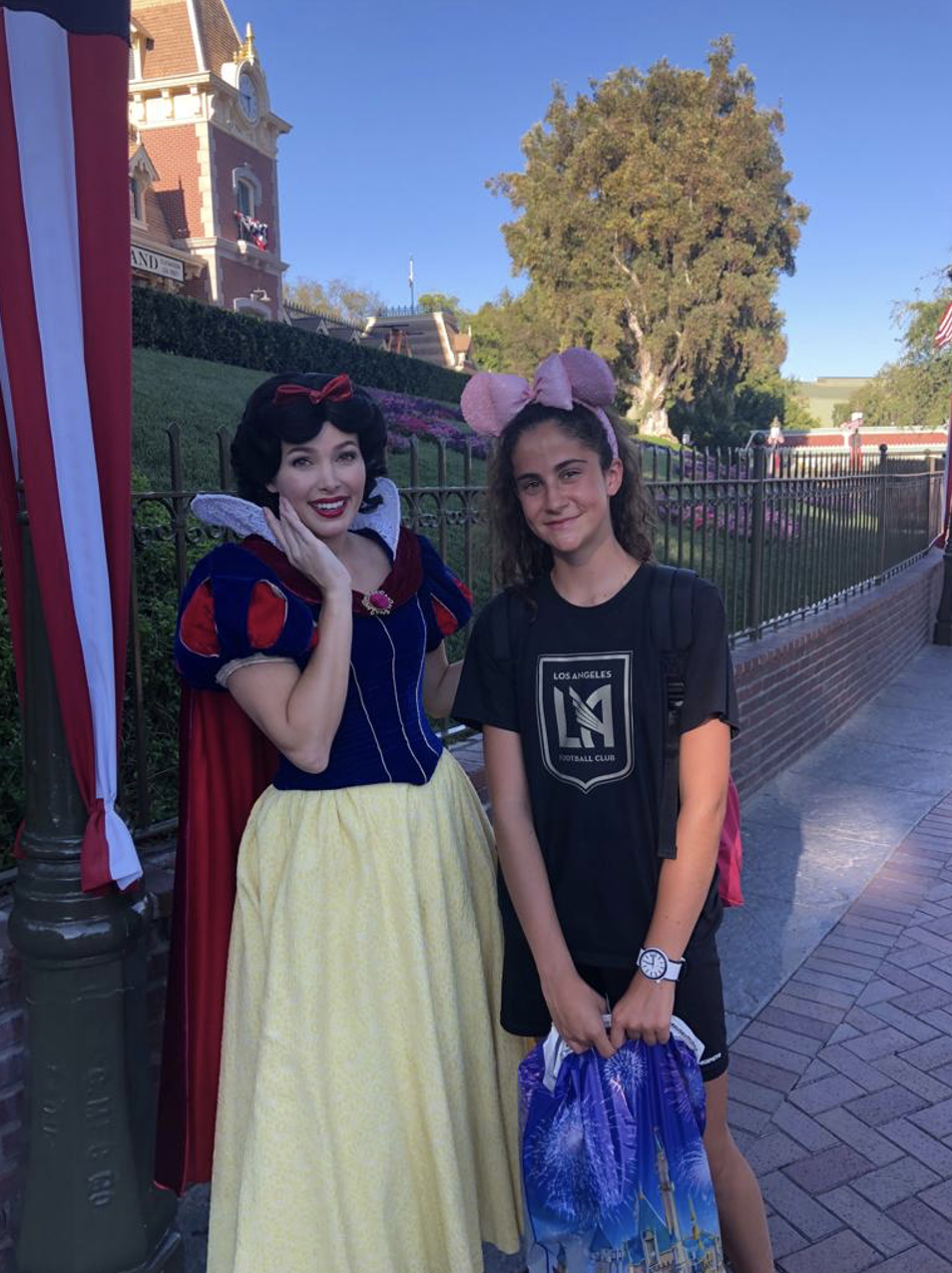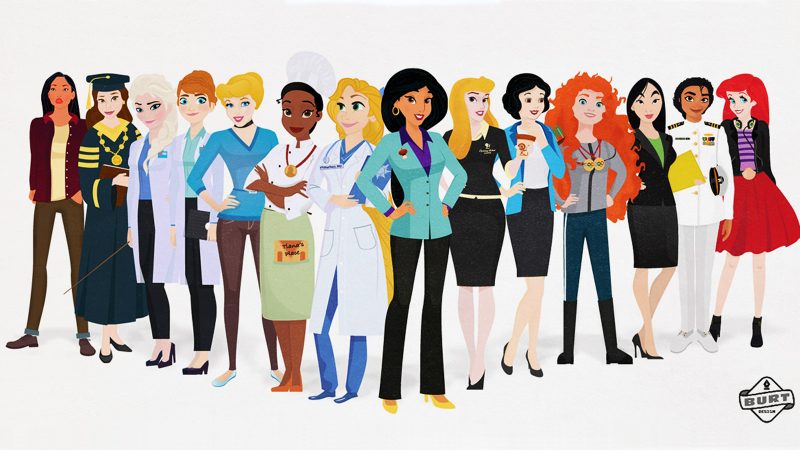What If? The Disney Influence in My (and Probably Everyone’s) Life
What if? The Disney Influence in my (and probably everyone’s) life
As I lean over my desk, slumped between piles of textbooks and scrawled notes, the weight of my schoolwork drags down my mind. The pressure to excel academically and carve out a niche in the competitive university environment sometimes becomes overwhelming. Yet amidst the chaos of deadlines and exams, an old song unexpectedly pierces the drudgery. The rich, sweeping sounds of “Belle” from Beauty and the Beast sweep me, in the blink of an eye, from the chill of my dorm room to one of wonder and magic. In an instant, I am no longer a struggling student trying to find her place, but a capable, independent young woman, venturing out into the world’s possibilities. The burden of academic intensity and the pressure to conform to societal norms melt away, replaced by a sense of empowerment, joy, and pure fantasy.
This dualism—the driven, high-achieving undergraduate and the stubborn inner princess—is one that I think most women can recognize, even as we struggle with the issues of higher education. Even as we strive to attain ends and stay resolute in our determination to make it despite adversity, there is deep within us a residual wish to be considered beautiful, elegant, and worthy of a fairy-tale ending.
The Lasting Impact of Disney
Disney’s princesses have been strong archetypes since childhood, influencing the dreams and self-image of generations of women. It may be the optimistic and courageous Mulan, the fearless and free-spirited Merida, or the tough and determined Elsa. Whatever, these figures have become part of the cultural iconography of women like me. Their stories, with their grand love and happy endings that work, are a solution to a fundamental human desire to be noticed, admired, and ultimately empowered against adversity. Although the presentations of women in Disney’s animated classics have evolved from one of passive weakness and male rescue through the years to that of more mature, empowered sensibilities, the underlying theme of the princess as the ultimate in feminine virtue and beauty remains constant.
This enduring effect is perhaps best illustrated by how Disney characters remain prevalent in our lives, even as we transition from youth to early adulthood. From the widespread Disney Princess merchandise that fills the shelves of college bookstores to the annual viewings of classic animated films that bring students together, the Disney brand is an integral part of female college life.
Women in STEM and the Disney Princess Paradox
As a female STEM degree student, I have struggled with this Disney princess dilemma in my own life. On one hand, I have dedicated myself to the rigorous pursuit of knowledge, motivated by an endless curiosity and an unwavering belief in the revolutionary power of science and technology. I have spent countless hours in the lab, meticulously conducting experiments, analyzing results, and pushing the boundaries of human knowledge. And yet, even as I become immersed in this hyper-rational, male-dominated world, a part of me still yearns for the fantasy escape of Disney fairy tales. I am attracted to the grace and elegance of the princesses, their ability to overcome adversity through a combination of inner strength, compassion, and resilience. In a way, these characters serve as a counterpoint to the often harsh, hyper-masculine STEM culture, providing a necessary outlet for my personality’s more emotional, artistic aspects.
 Now, six years ago… I met Snow White! At Disneyland here in L.A. I would have never thought I would be living here!
Now, six years ago… I met Snow White! At Disneyland here in L.A. I would have never thought I would be living here!
This tension is not merely my own, but a broader reflection of the challenges young women in STEM face. We are exhorted to be brilliant in domains that have traditionally been the male preserve, to prove ourselves by hard mental work and the achievement of advanced technical skills. And yet, simultaneously, we are bombarded with social messages that tell us our true worth lies in physical attractiveness, the ability to find a partner, and conformity to stereotypical feminine and masculine roles.
The Disney princess model, emphasizing physical attractiveness, passivity, and the pursuit of romantic love, can be employed to validate these restrictive narratives. And yet, there is also something compelling and uplifting about these women, particularly in their resolve to succeed against what appears to be insurmountable adversity.
As I pursue further study, I find myself drawn to a parallel between my own dreams and those of Disney’s beloved princesses. Like they did, too, I wish for something greater, a life beyond the constraints of my current condition, a chance to unfurl my wings and find the boundless, untapped potentialities that lie before me. The heroines I have known and grown up with, from Belle’s thirst for adventure to Jasmine’s hunger for freedom, have instilled an astounding sense of wanderlust in me. They have shown me that not only can it be done, but it should be done, to break convention, to transgress beyond the boundaries placed upon us by society and tradition. Whether Ariel’s desire to be a part of the human world or Mulan’s desire to define herself on her own terms beyond the predetermined path set before her, these princesses have demonstrated an unwavering commitment to forging their own destinies.
In many respects, their stories have served as a blueprint for my own life as a young woman in higher education. Like them, I too long to break free from the shackles that would hold me back – the family obligations, the suffocating institutions of higher education, and the restrictive social norms governing what it means to be a woman. Just as these princesses have continually proven themselves to be strong, resilient, and capable of overcoming adversity, I now commit myself to do the same and embark on my own journey of self-realization and fulfillment.
Towards a New Synthesis: Embracing the Duality of the Modern Undergraduate Woman
Looking at this tension, I am struck by the reminder that the duality of the woman’s experience—the coexistence of the princess and the STEM scholar, the rational and the emotional, the powerful and the vulnerable—is not weakness but strength to be praised. For it is in accepting this complicated womanhood that we may find actual freedom. By acknowledging and honoring our multiple forms of womanhood, we can move beyond the limiting either/or dualisms that have often confined us to narrow expectations and self-definition.

Figure 1 from Here are the Disney Princesses reimagined as empowered women
We can be intelligent, enthusiastic STEM students who also appreciate Disney princesses’ beauty and elegance. We can be assertive, self-sufficient leaders who still love finding our “happily ever after.” We can be rational, analytical thinkers who tap into the power of imagination, creativity, and emotional intelligence. In doing so, we not only challenge the narrow societal norms placed upon us but also redefine what it means to be an empowered, successful woman in today’s world. By integrating the broken pieces of our identity, we can forge a new, expanded model of female identity—one that celebrates the diversity of our experiences and the limitless potential of our dreams.
I will honor that I am at once a sharp, motivated student and an optimist to a fault, besotted with the magic and promise of Disney’s timeless tales. Within the complete exchange of these two halves of myself, I find my inner strength, resilience, and firm sense of purpose. This shared desire for something more, this relentless pursuit of our most unrealistic dreams, binds me together with the Disney princesses whom I have come to love. Their lives have inspired me and shown me how to tackle the fragile challenges and exhilarating possibilities that lie ahead. And as I proceed further down the winding path of my education and life journey, I will carry with me their spirit of adventure, boundless courage, and unshakeable belief in the power of dreams, always ready to spread my wings and soar.